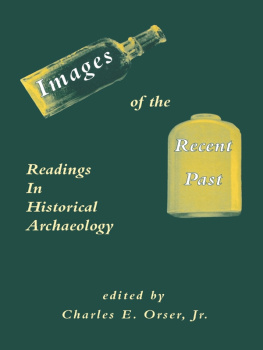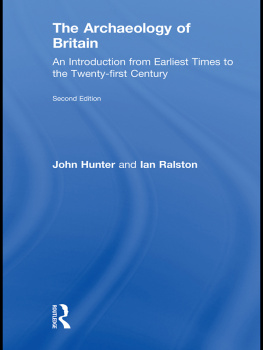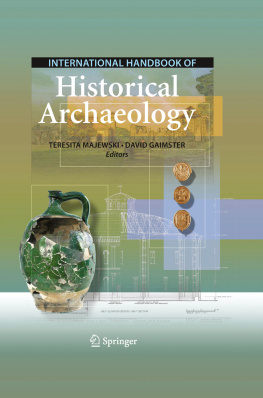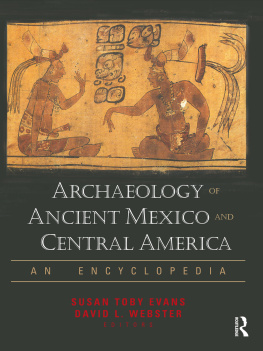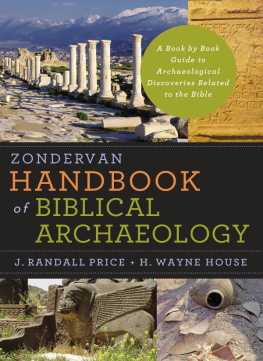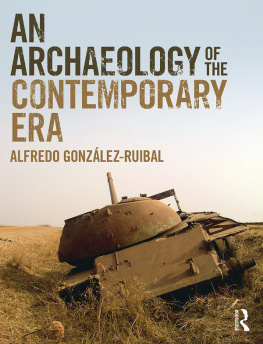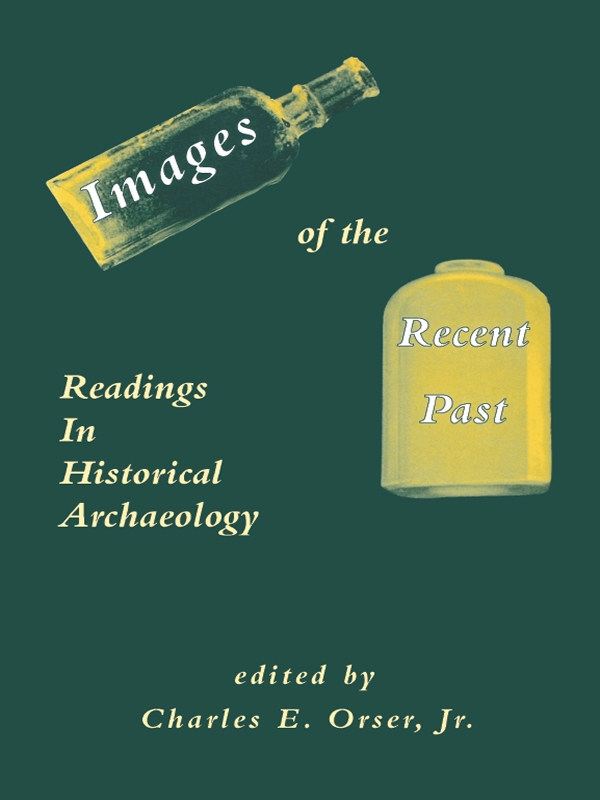Charles E. Orser, Jr. is professor of anthropology at Illinois State University. He is the founding editor of the International Journal of Historical Archaeology and of a book series entitled Contributions to Global Historical Archaeology. His most recent books are Historical Archaeology (with Brian M. Fagan, 1995) and A Historical Archaeology of the Modern World (1996). His research interests are in global historical archaeology and the archaeology of disenfranchised groups, and he is currently conducting a long-term research project in Ireland.
Introduction
Historical archaeology is not a new subfield of archaeology, although its emergence as a legitimate subfield in the consciousnesses of most American archaeologists is relatively recent. Much of the earliest archaeology conducted in Europe was historical archaeology because it was concerned with civilizations documented in some form by written records. The origins of archaeology in the 15th century resulted in a tradition emphasizing the classical sites of Greece, Rome, and the Bible lands (Braidwood 1960:68; Daniel 1967:15; Rowe 1965) using both documents and objects as research tools. Other branches of archaeology have, of course, developed in Europe since then, emphasizing the study of both prehistory and history from a developmental, cultural-historical orientation.
In North America as well, some of the earliest archaeological research concerned historic-period sites, such as the excavation of an historic-period Algonquian grave in 1622 by the settlers at Plymouth (Schuyler 1976:27; Young 1841). Applied historical archaeological methods in a quite modern sense were used in 1797 to settle a political dispute between Britain and the newly established United States. The dispute concerned the course of the St. Croix River as mapped by Champlain, which established the boundary separating American from British territory after the Revolutionary War. To help solve this problem, a survey and test excavation were undertaken to find the French settlement of St. Croix, which was recorded by Champlain but later abandoned. The remains of structures and artifacts were located and helped to solve the dispute over the boundary (Schuyler 1976:2728).
This article was originally published in Advances in Archaeological Method and Theory, Vol. 5, pp. 151177, Orlando: Academic Press, 1982.
Despite these examples of early historical archaeology in North America, the field has not had a continuous and active role since that time. Not until the mid-1960s did historical archaeology gain formal status, and even then, there was considerable confusion as to what historical archaeology actually was, did, or even ought to do. This resulted in the crisis of identity discussed in the following, which has remained with us to some extent.
This crisis of identity was reflected in the lack of agreement among historical archaeologists upon the proper name and proper definition of the field. These discussions resulted in the assignment of labels, with varying degrees of restrictiveness, to the potential subject matter of the field (Schuyler 1970). Historical archaeology has emerged as the most generally used term today, largely on the premise that the closest, and somewhat more cumbersome competitor, historic sites archaeology, implies that the field concentrates on sites of historical significance, as opposed to cultural significance.
A number of definitions of the field can be found, which more or less emphasize the presence of a documentary record as the distinguishing feature of historical archaeology. Examples include the study of material remains from any historic period (Schuyler 1970:119) and the archaeology of the spread of European cultures throughout the world since the fifteenth century, and its impact on the indigenous people (Deetz 1977a:5). Noel Hume defines archaeology as the study of material remains from both the remote and recent past in relationship to documentary history and the stratigraphy of the ground in which they are found (1969:12); whereas according to Stanley South, those studies using both archaeological and historical data have come to be called historical archaeology (1977:1).
None of these definitions have been entirely satisfactory to all historical archaeologists for various reasons of emphasis and subject-matter restriction. Schuylers definition, for example, is perhaps too elegant, implying to the unwary that material remains themselves are the focus of historical archaeology, rather than the cultural systems that produced them. Likewise, Souths statement could also describe several contemporary historical studies that use both historical and archaeological data (Hall 1981; Manucy 1978). Since the time when Deetzs definition was offered, several emphases in historical archaeology have emerged that would be difficult to encompass within that definition, such as the study of African-American culture, Asian-American culture, and the Victorian period. Noel Humes suggestion, aside from its puzzling construction, implies a stronger emphasis on documentary history as the focus of organization than many contemporary historical archaeologists are comfortable with.
All of these definitions, however, include reference to the use of both archaeological and historical data in research, and are thus in agreement that the time period covered by this discipline begins after 1492 for North America. The subject matter suggested includes material remains and past behavior. Thus, most historical archaeologists would probably agree that the field includes the study of human behavior through material remains, for which written history in some way affects its interpretation.
In only two decades, historical archaeology has made a rapid theoretical progression from descriptive and chronological concerns, through cultural historical studies, to problems of culture process, cognition, and archaeological principles. The process has been in a sense additive in that the earlier goals continue to be addressed by historical archaeologists even as they pursue more contemporary problems and issues. Historical archaeology is today a complex discipline that incorporates principles from, and makes contributions to, a number of other disciplines both within and outside anthropology.
Because of its unique command of all the contexts of human behavior (Schuylers spoken word, written word, preserved behavior, and observed behavior [1977]) (see also Brown 1974), historical archaeology has been able to make contributions that would not be possible through any other avenue of inquiry. Documented information about past social, temporal, and economic variables allows investigation of the cultural processes that affect those variables, and which are in turn affected by them. Furthermore, the simultaneous access by historical archaeologists to both emic statements (documents) and etic statements (archaeological data) about conditions in the past allows the study of behavioral processes involved in human perception, and the manipulation and means of coping with the environment.
It is partly due to these same circumstances, however, that historical archaeology today is in a difficult position. Most contemporary historical archaeologists are trying to establish the field as a subdiscipline of anthropology, both because of its unique potentials for understanding human behavior and because most American archaeologists are trained in anthropology departments. At the same time, however, the field is closely associated with other, nonanthropological disciplines that frequently can recover information relevant to their concerns only through historical archaeology. This is particularly true of such fields as applied history and architecture. Because historical archaeology, unlike prehistoric archaeology, shares its subject matter with other disciplines that ask very different kinds of questions about the same subject matter, the process of self-definition has been somewhat more complex.

